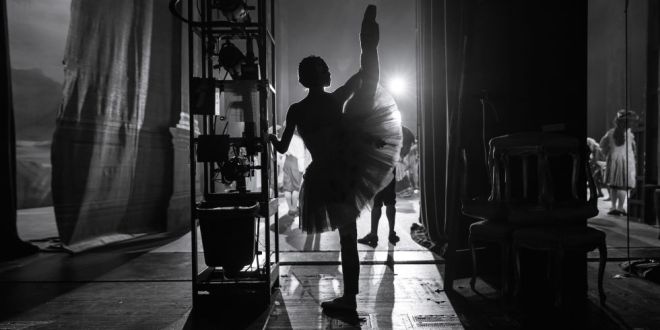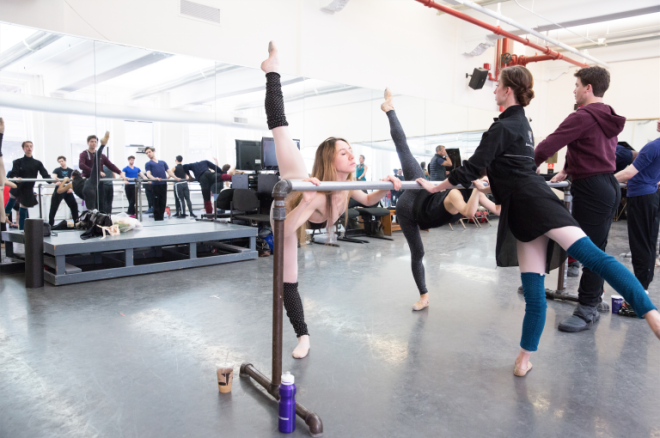
Ballet was an instrumental component in who I was for 12 years of my life. From the age of 4 up until the age of 16, I fell in love with the artistry and endured the sport that is ballet. Through my own extensive experiences and observations that I gained from countless hours of rehearsals, classes and performances, I knew ballet better than any other form of physical exercise or art. Because of my experiences, I’ve come to not only understand, but to firmly believe that ballet finds its undeniable success through the quality of being equal parts an art form and a sport.
Ballet has been a highly regarded cultural and artistic element of society since the 1600s, with the practice of ballerinas dancing sur les pointes, or on the toes, being first introduced in 1795 (The Pointe Shoe, A History).

Although it is typically recognized as a valuable art and cultural form in society, many don’t realize the physicality and endless practicing that come with it. Today, on average, a professional ballerina practices for several hours (anywhere from 6 to 10) a day, six days a week. Although there are variances between companies in terms of schedule parameters, the ideals remain the same. The days for a professional are filled with classes, physical therapy, rehearsals and sometimes performances, with small breaks intermixed. The packed schedules exists because it is such a specialized and taxing field that requires strict proficiency to gain success. The hours of grueling rehearsal enable a “practice makes perfect” mentality, inform muscle memory, and allow ballet dancers to reach a refined level that makes dance look easy for their audience. In reality, ballet is anything but easy.
Every second that goes into ballet requires athleticism and physical work. The mere skill of rising to the squared toe that is the pointe shoe seems simple, but, in actuality, requires great strength in order for one’s ankles, toes and muscles to handle such a feat. In an article featured in Marie Claire, American Ballet Theater’s prima ballerina Isabella Boylston is interviewed on what it’s like to be a prima ballerina. Boylston speaks volumes towards the level of physicality that ballet constantly requires. In her interview with Jessica Pels, Boylston states that “it’s easy, as a viewer, to miss the fact that a dancer is doing twelve counterintuitive things at any given moment to create what you see—keep stomach lifted, tailbone tucked under, legs turned out (from the hip, not the knees), arms supported (by the back, not the shoulders), neck relaxed, expression pleasant…and this is merely for standing still in first position.”

Ballerinas aren’t the only athletes to call attention to the physical difficulty behind the art form. In an interview by CBS with Steelers nose tackle, Steve McLendon, the player pays homage to ballet as his secret ingredient to his own physical success.
McLendon began taking classes in ballet as a senior in college with the idea that it would enhance his agility and provide skills he would need to continue his football career.

He hasn’t looked back since, even quoting that “It’s harder than anything else I do” (Katzowitz). McLendon also believes that it is ballet that strengthens his knees, ankles and feet to the point that he avoids injury, and he can tell when he hasn’t taken a class in a while because his strength is down.
A company that helped show the difficulty ballet required as a sport? Under Armour.
In 2014, Under Armour released an intriguing advertising campaign featuring Misty Copeland, a principal dancer for the American Ballet Theatre. The campaign seeks to promote Under Armour as a brand for female athletes, by showing the strength and skill required of Copeland in the sport of ballet. The video of Copeland dancing went viral and has raised awareness to both the difficulty of ballet and the success that coincides with hard work. Copeland realizes the credibility the video has given to the sport of ballet, as she states that she is “grateful for the opportunity Under Armour has given me to show people the intense training and dedication that goes into ballet.”
In addition to the physicality of the sport, ballet accomplishes the role of being an art form through the implementation of mixed artistic media. From lighting design, stage design, costume design, musical composition, choreography, and the physical dancing itself, a full ballet integrates all forms of artistry and design. Essentially, ballet finds its success as a profound art form through integration of music, costumes and lighting, that coincide with the physical dancing.
Furthermore, a ballerina is an artist through their ability to utilize movement to provide expression. The mere ability a ballerina has to portray emotion or thought with just facial expression in conjunction with choreography and music is astounding. There is unarguable artistic sense and power in the capability to communicate in such a way.
This artistic aspect of telling a story without speaking relies heavily on practice and skill. Rhythm and timing are crucial to help evoke specific emotions and elements. In an explorative study put on in Canada and featured in Research for Dance Education, the importance and impact behind rhythm in ballet training was heavily considered (Côté-Laurence). The study looked at the historical importance and power of synchronizing steps to the music, in terms of the power it portrayed in the art form. It is music that helps enable a cohesive portrayal of both the emotion and the storyline, when it is paired with a specific step or movement. In essence, the end results of the study suggested that “understanding the processing of rhythmic elements and the control of synchronization may facilitate ballet training” (Côté-Laurence). This rhythmic understanding of subconsciously hearing the tempo of classical music and simultaneously matching the beat to the choreography perfectly is complicated and requires much practice. However, this skill helps fully enforce the power of ballet because it drives the storytelling aspect of the art form when the music and steps are intertwined.

When it comes to the integration of both sport and art to create something culturally significant and powerful, the result is few and far between. Ballet finds its true essence as a mix of sport and art. Ballet wouldn’t be as magical without the grace and ease that comes naturally within the art form, and it wouldn’t be as perfected and flawless without hours of strenuous practice and rehearsal work.
Anyone that has merely heard of ballet will arguably identify fluidity, precision, and grace as crucial elements in the composition of a ballet. They are the components that collide to make ballet a beautiful and classical art form, and it’s the ballerinas who practice endlessly to achieve the desired smooth and easy appearance. Yet, the extreme physicality, flexibility and exhaustive strength precision that ballet requires contains not only practiced artistry, but also sport-leveled skill. This melding of talents labels the dance equal parts art and sport. In fact, it cannot exist on such a highly successful level without both factors included and implemented correctly. Without physical exertion and exhaustive practice known to most sport practices, ballet wouldn’t be as perfected of an art form. In the same sense, without the full understanding of movement, music and emotional portrayal, ballet wouldn’t be successful as an art form.
_________________________________________________________________
Works Cited
- Côté-Laurence, Paulette. “The Role of Rhythm in Ballet Training.” Research in Dance Education 1.2 (2000): 173-91. Academic Search Complete [EBSCO]. Web. 22 Feb. 2017.
- Katzowitz Jul 31, 2013, Josh. “Steve McLendon: Ballet is ‘harder than anything else I do’ .”CBSSports.com. N.p., 02 June 2015. Web. 22 Feb. 2017.
- Pels, Jessica. “Inside the Life of a Prima Ballerina.” Marie Claire. N.p., 22 Oct. 2015. Web. 20 Feb. 2017.
- “The Pointe Shoe, A History.” History Cooperative. N.p., 18 Sept. 2016. Web. 22 Feb. 2017